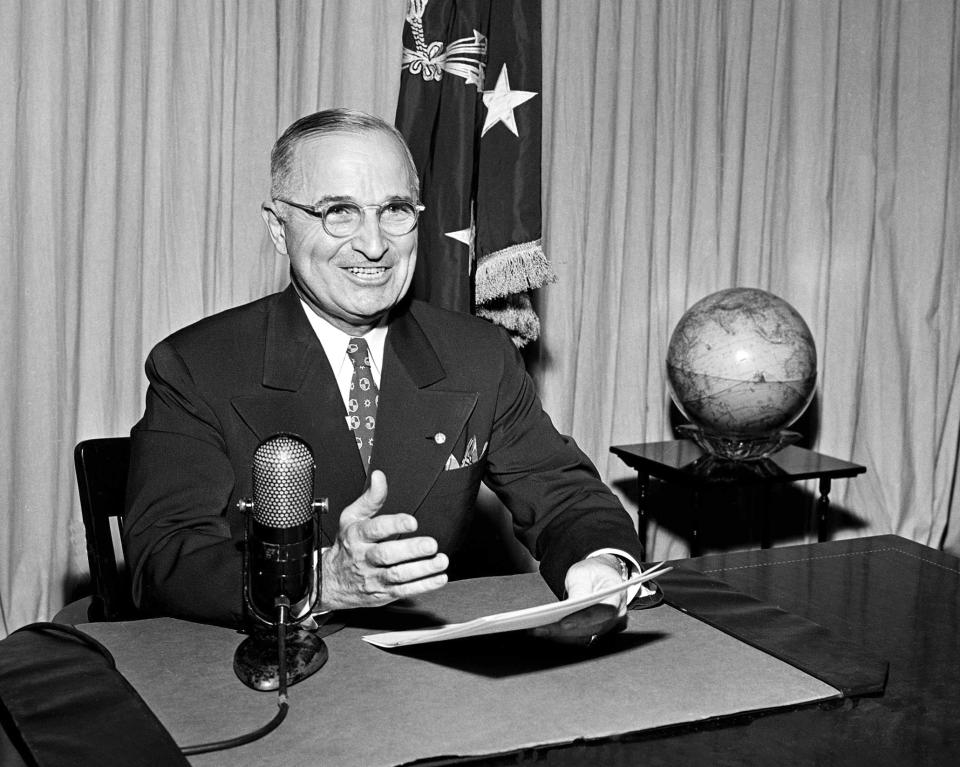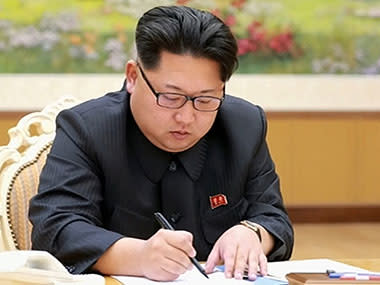Six times the Doomsday Clock ticked closest to nuclear Armageddon

This week, the Bulletin of the Atomic Scientists moved the Doomsday Clock to two minutes to midnight, the closest it has ever been.
Reflecting fears over Donald Trump’s fiery confrontations with North Korea, the Bulletin of the Atomic Scientists moved the clock to a level not seen since the height of the Cold War nuclear arms race.
Bulletin official Lawrence M. Krauss said, ‘To call the world nuclear situation dire is to understate the danger, and its immediacy.
Most popular on Yahoo News UK
Father of top showjumper jailed after smuggling £4 million of cocaine in horse box
Family confronts carer who slapped and abused their dementia-suffering mum on camera
Doomsday Clock moves to two minutes to midnight as Trump stokes nuclear tensions
University student ‘reported Tinder date to police before he stabbed her to death’
Tony Blair’s sister-in-law backs calls for chemical castration for sex offenders
The Bulletin was founded by concerned US scientists involved in the Manhattan Project that developed the world’s first nuclear weapons during the Second World War.
In 1947 they established the Doomsday Clock to provide a simple way of demonstrating the danger to the Earth and humanity posed by nuclear war.
The world has never stood closer to the brink, according to the Bulletin. Here’s five times when the hands ticked closest.
1949: Three minutes to midnight

President Harry Truman tells the American public that the Soviets tested their first nuclear device, officially starting the arms race.
The Soviets deny it, but a new era in history begins.
1953: Two minutes to midnight

The United States tests the hydrogen bomb, a far more powerful nuclear device capable of obliterating whole cities.
In October 1952, the United States tests its first thermonuclear device, obliterating a Pacific Ocean islet in the process.
Nine months later, the Soviets test an H-bomb of their own.
1981: Four minutes to midnight
The Soviet invasion of Afghanistan, combined with new Western leaders Margaret Thatcher and President Reagan saw nuclear tensions rise with the Soviet Union.
1984: Three minutes to midnight
Tensions between the superpowers saw dialogue virtually stop – and factions within Russia believed NATO was about to launch a nuclear attack.
2007: Five minutes to midnight

North Korea conducts its first nuclear test – highlighting fears over nuclear proliferation.
The Bulletin said, ‘The world stands at the brink of a second nuclear age. The United States and Russia remain ready to stage a nuclear attack within minutes, North Korea conducts a nuclear test, and many in the international community worry that Iran plans to acquire the Bomb. Climate change also presents a dire challenge to humanity.
2015: Three minutes to midnight
The Bulletin said, ‘Unchecked climate change, global nuclear weapons modernisations, and out-sized nuclear weapons arsenals pose extraordinary and undeniable threats to the continued existence of humanity, and world leaders have failed to act with the speed or on the scale required to protect citizens from potential catastrophe. These failures of political leadership endanger every person on Earth.’

 Yahoo News
Yahoo News 

